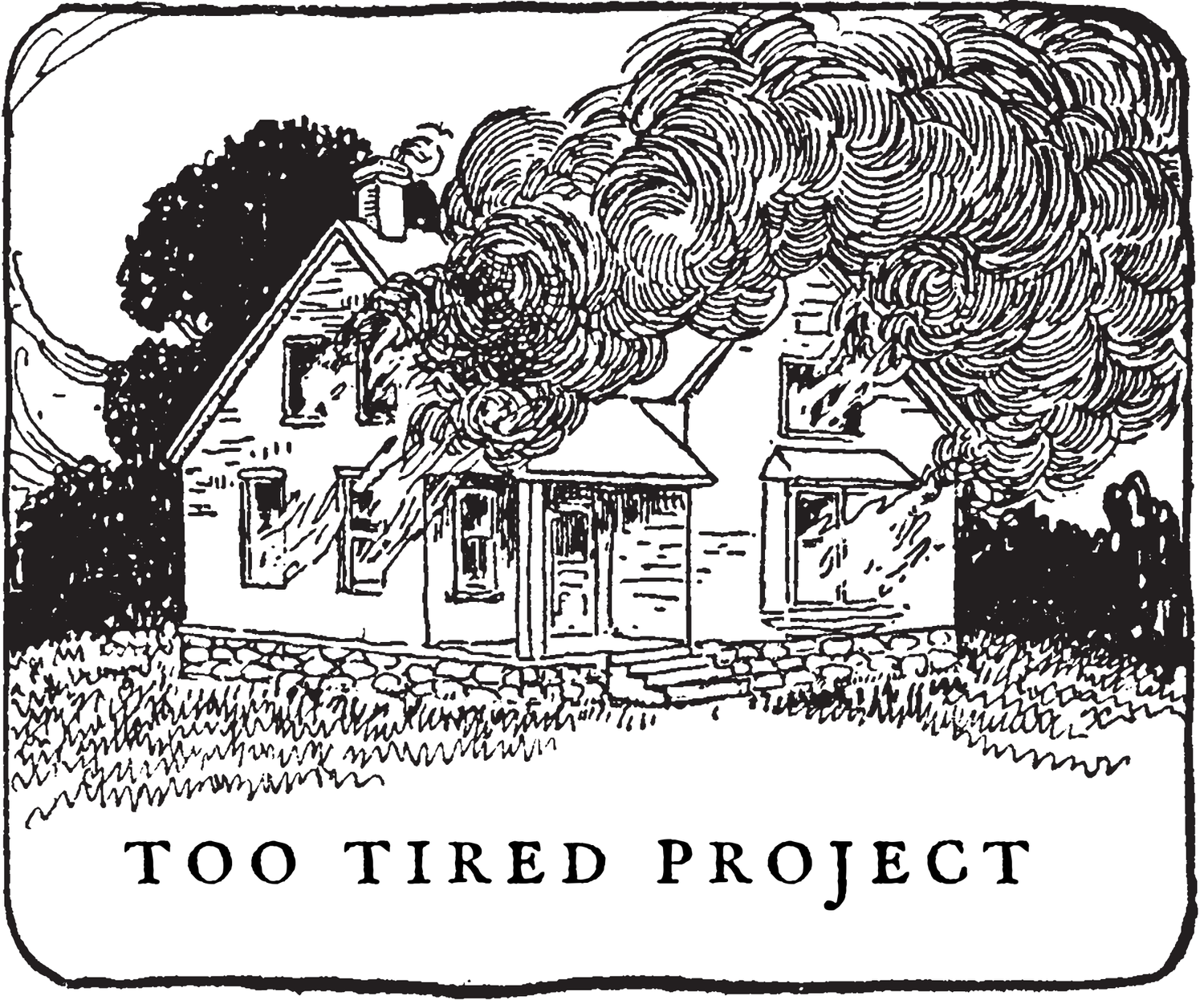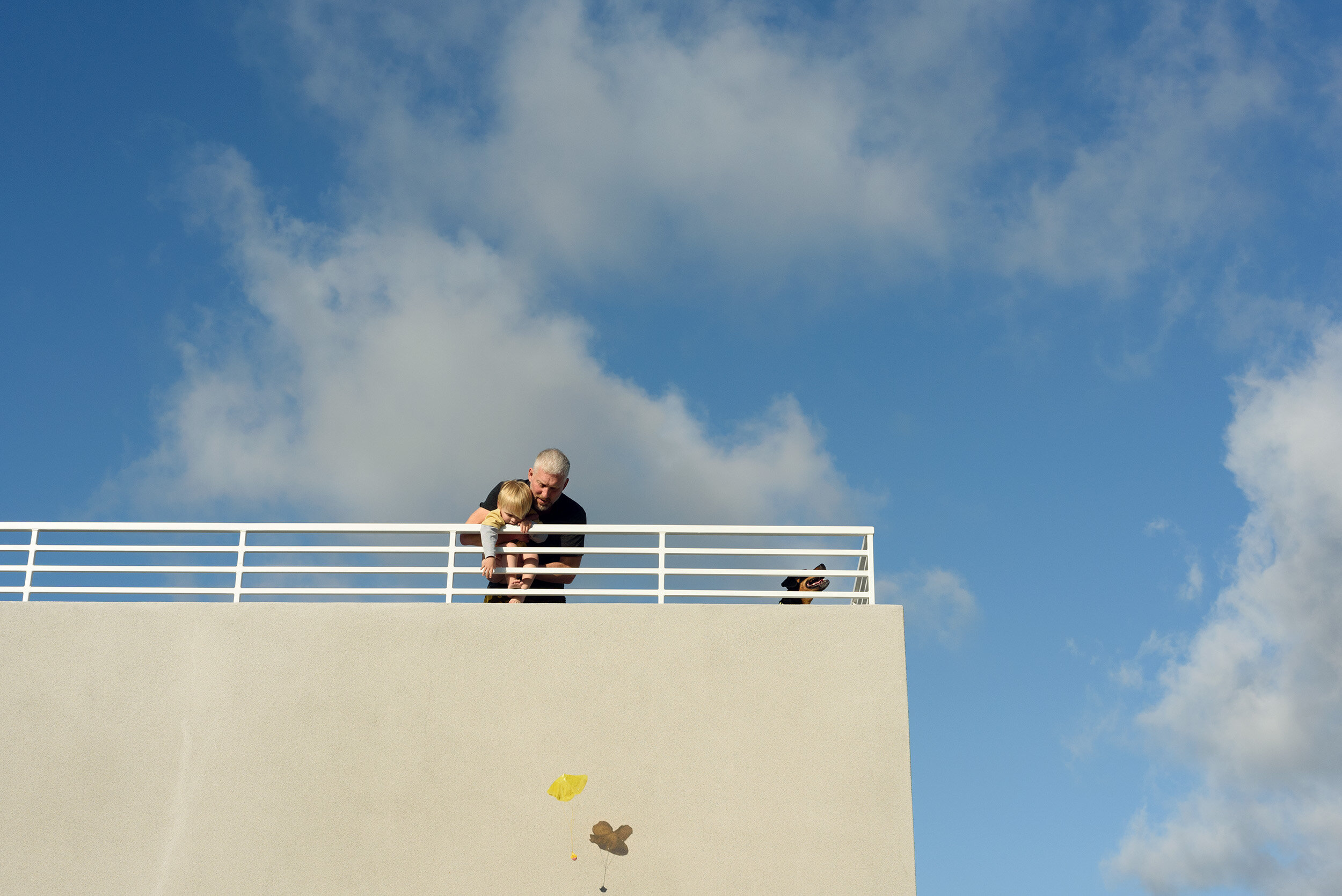Interview: Annie Claflin on her practice and Covidity 2020
I See Us, 2020
Tell us about the project.
“Covidity 2020” started one month after stay-at-home orders were announced in California in response to the Covid-19 pandemic. This was also two months after my family moved cross country. I’ve always documented my family life, but this time it was different. I photographed my surroundings and family (my son, in particular) to process what was happening and the fact that we were going to be home for a while. I learned, through writing captions for my photographs, that I was actually projecting what I was feeling and what I felt in my childhood onto my son. I saw loneliness and fear in my images and it made me realize that I was feeling lonely and fearful. I assumed that was my son’s reality as well. Covid was the pinnacle moment in a long line of emotional struggles throughout my life.
Much of my current anxiety is rooted in the sense of unease I feel with respect to my four-year-old son. He was born unexpectedly ten weeks early and spent six weeks in the Neonatal Intensive Care Unit (NICU). I held onto the trauma produced by that terrifying experience; I kept the fighting spirit of those times, when I didn’t know the fate of my son’s life. It’s like I was reliving that period of time in my relationship with him; I was in a constant state of heightened anxiety and Covid just blew the lid off the sucker. Photography is my coping mechanism. It’s a way for me to survive, and, at a time when our lives were up-rooted (during the Coronavirus pandemic of last year), it all went berserk. “Covidity 2020” is a visual and textual diary of the sustained anxiety and depression I was experiencing while my son was at home with me, and I was the primary caregiver.
Parachute Man, 2020
What is your process like?
I make a ton of pictures. Even when I shot film, I made a ton of pictures. With digital, it can get to be a lot if I let it. Whether or not I have a specific project in mind, I shoot from my gut. When anxiety takes hold of me, I listen to it and make an image. It lessens the fear, temporarily. I’m also leaning into the fear, capturing the moments when my mind is going off the rails but nothing is happening that is actually “scary”. Framing the chaos of my mind in camera helps me feel like I’m in control. It’s a double-edged sword though and I’m often divided - do I stay and be present, without my camera as a crutch, or do I make an image to aid me in slowing down? Am I just hiding behind the camera? It’s a difficult balance - living in the moment or photographing it - and the camera usually wins.
Alone But Not Lonely, 2020
Does mental health or wellness factor into the creation of your work?
Absolutely. My photographs are driven by discomfort. I create photographs about, and out of, my anxiety. When I feel uneasy, I make a picture. When I’m joyful, I catastrophize that I won’t be able to hold onto the feeling, so I make a picture. Photography makes me feel better, as it levels off uncertainty and insecurity, but it’s also a coping mechanism that never actually works permanently. It doesn’t eliminate anxiety and depression, even if it makes me feel better temporarily. So, yes, mental illness fueled my creative practice in 2020, as it has since I picked up a camera. It’s only now, in recovery from that major depressive episode last year, that I’ve started to make “happier” images. My creative practice soothes me; it gives me structure, purpose and creates stability. Making artwork is one of my tools for maintaining mental wellness.
Sad Robot, 2020
How did you begin this project?
This project began as I tried to adjust to a new home life situation, being the primary caregiver to my son, during the onset of Covid-19. I became fixated on my son’s physical and mental wellbeing to such an extreme extent because we were home together all of the time. I didn’t have a break from, nor did I have any perspective about, my constant anxiety in relation to him. My photographs became a way for me to illustrate how scared I was. I created the reality that I was imagining by picturing my son in solitary situations, when he was tired, and when he was frustrated. They’re all normal emotions, especially for a child who cannot grasp the situation. But, for someone who has a hard time accepting their own emotions, I was sure that my son was having a way more difficult time than he probably was. He started exhibiting behavioral issues (that’s the title for one of my photographs of him in this series) and frequent mega tantrums. This is all standard conduct considering the grandeur of the situation, but in my mind his pain was unbearable, for both of us.
Was the process of creating this project helpful for dealing with the emotion you’re describing in your images?
By picturing what I was going through, it illuminated my experience. What I was feeling (alone, unhappy, and worried) became apparent in my images. My photographs aided me in confronting my own state of mental health so that I was able to get the help I needed at the time. Because of what my photography showed me, I hit an emotional bottom, sought a greater level of care for my depression and anxiety, and ultimately pulled through that particular episode.
Take a Load Off, 2020
How are you affected by the natural world that you see day-to-day?
The world is an unstable place in my eyes. Even when I concentrate on the beauty of it, I see beauty as fleeting. I’m drawn to themes of broken boundaries, both interpersonally and in my landscape photographs. I have a difficult time differentiating between you, me, and our surroundings. I’m working on a series about coastal erosion in San Diego and that is a part of who I am as an artist and as a person - I always feel like I’m standing on shaky ground.
I’m also affected by the weather. I grew up in Boston and moved to Los Angeles in my 30’s. My husband’s work brought us back to Boston five years later, and I just couldn’t (re)adapt to the cold, dreary climate. We moved from Boston again, back to Southern California after only two incredibly depressing winters. I believe that extracting myself from winter and my familiar east coast surroundings allowed me to take a good look at myself. I had to take away that Boston landscape to rebuild a healthier identity. San Diego terrain is so different from that of the East Coast so I feel like I’m walking on the moon here. I’m a stranger in a strange land but it’s pretty cool to call this place “home”. I think of landscapes as home and am interested in the intersection of people and the places they inhabit, not only in how landscapes define us but also the convergence of man and nature. I am in no way, shape, or form a camping gal though; glamping for a day or two is more my style. I like to appreciate my landscapes from a distance. Although, my family consistently hikes on weekends and I think that’s pretty rad.
Behind the Screen, 2020
What is your relationship to photography?
I’ve always had a camera in my hand and was influenced by my family of amateur photographers. I was accepted to Emerson College for Creative Writing, but picked a camera up instead. I went to photography and art school. I couldn’t get enough of the stuff. At one point, I tried to leave being a photographer behind, I completed a Master’s in Arts Administration and pursued a career as a Fine Arts Photography Specialist at Skinner Auctioneers. I loved that job. I got to look at amazing photographic prints daily and research them. It was like photography CSI. My co-workers were incredible and everything felt like it was coming together in my life, with photography at the center. But then, my husband and I had an opportunity to move to Los Angeles that we couldn’t resist. Being from Boston and having lived there my whole life, I felt like this was an important change to make. When I arrived in L.A., it was hard to land a job, so I started gathering up photo gigs; I shot some weddings, made some work about dogs and their people, and that was that. I got a taste of photographing again and couldn’t look back. Then, I had a child and everything came full stop for a few years. When my son began daycare, I started my own family photography business for a little while. I neglected the creator in me to improve my business acumen. During Covid, I got my creative groove back, mostly through some amazing classes, and also because of my fascination with exploring what scares me - losing my loved ones to a pandemic, for example. There’s no more primal place to make artwork from than raw fear. So, I’m obsessed with photography. I’m fascinated by, in awe of, and completely mesmerized by all things photographic. It scratches the itch in my math brain. It feeds my creative brain. It helps me cope with uncomfortable feelings. Making images is a compulsion but it helps me to heal too.
The Delay, 2020
Has the pandemic shifted the way you approach your work and/or photography at all?
Yes. I’m an artist again. I realize I cannot not make photographs. I’m putting myself out there like I never had the courage to do before because I’m feeling better, mentally. I went into such an emotional downward spiral that I had to confront my demons, ask for some serious medical help, and dissect my relationship with photography. Was photography serving me or perpetuating negative views I had about the world and my relationship to myself and others? Now that I have recovered from that major depressive episode and have more tools to take care of myself, I can describe my fears through photography while also reveling in the stillness (that’s the title of yet another new series of photographs I’m creating). Photography is now a tool for my recovery. I see things that would have previously evoked sadness or anxiety (my son playing by himself, changing light, dirty laundry and dishes) and make images of them that are about appreciating a new, more upbeat perspective that I have adopted. Life is beautiful and I don’t want to miss a thing, but it’s okay if I don’t record it all. Just living and being present is more important than making a photograph. I still obsess about making images and do so compulsively, but my behavior in relation to photography is better than it used to be. My images have a purpose that is more fulfilling than before. I’m happier and I think that my images are happier too. I’m excited to see what pops up next.
Thank you so much to Annie Claflin for taking the time to speak with Too Tired Project. You can explore more of her work on her website.







